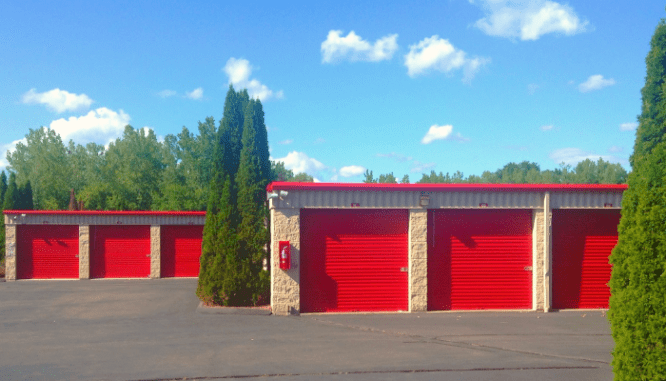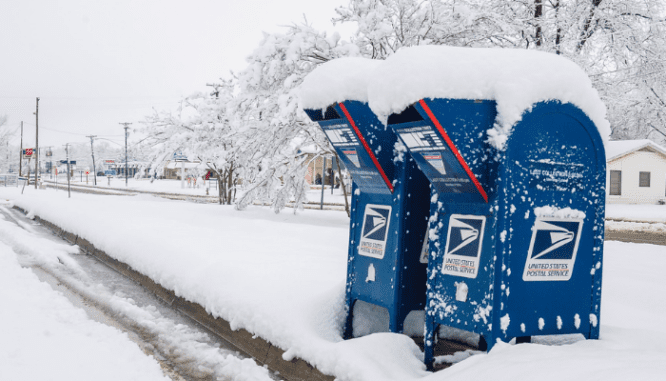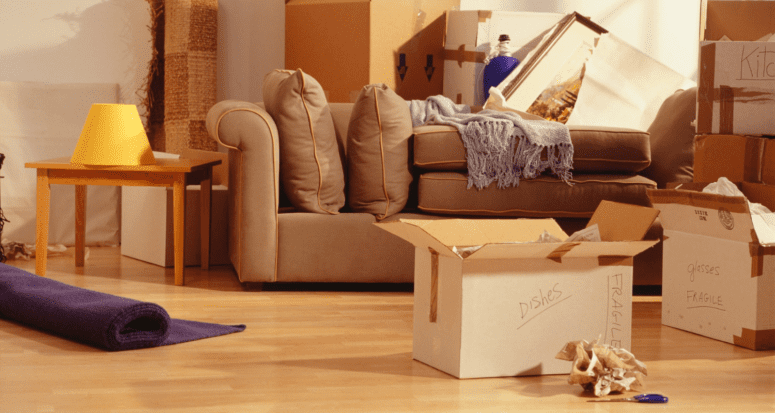Everything You Need for Moving Day: A Printable Moving Checklist
- Published on
- 7 min read
-
 Jody Ellis Contributing AuthorClose
Jody Ellis Contributing AuthorClose Jody Ellis Contributing Author
Jody Ellis Contributing AuthorJody Ellis is a freelance writer with more than 15 years of experience in the writing industry. Her work includes copywriting and content marketing for real estate professionals, stories covering real estate trends and housing markets, and varied articles on decor and design. In addition to buying and selling several homes herself, she's also owned and managed rental properties, and previously worked in mortgage lending.
Back in the day, most of us didn’t have to worry about much more than packing up a few boxes and that sagging couch we snagged from Goodwill when the time came to move to a new place. Grab a few buddies, buy everyone pizza and beer, and moving day was done!
Moving today is much more complicated, however; not only do we often have to deal with closing on a new house while selling the old one, but we also have families to consider, utilities to switch over, mail to forward, and a lot more stuff to move in general. And it seems like no matter how much you try to plan ahead, there’s always something you forgot to do, a utility you neglected to cancel, or other issues you didn’t think about beforehand. That’s why using a moving checklist can be really helpful.
We’ve created a printable moving checklist that covers just about any issue or contingency that goes with moving, as well as talking to real estate professionals who know the ins and outs of what’s really involved with moving to a new home. Here’s a breakdown of everything the list covers, with tips on how to make your moving day as stress-free as possible.

Start planning your move early
If you want a relatively smooth and seamless moving day, organization is key. You can use programs like Google Docs or Excel to create spreadsheets and build a timeline, which not only keeps you on track, but will also help prevent an overwhelming list of last-minute “to-dos.”
Start early, at least 30 to 45 days prior to your actual move, and make an inventory of your belongings so you can decide what to keep and what to toss.
Getting a copy of your new home’s floor plan can be helpful, as well, and measuring any furniture you have to make sure it will fit will help prevent finding out at the last minute that your favorite couch doesn’t work in the new living room.
Real estate agent Kim Alden, who is based out of Illinois and has more than 16 years of experience in the industry, says that as an agent, she tells both buyers and sellers to start packing early.
“When we list a property, we usually stage it,” she says. “We tell people to go ahead and start pre-moving and packing.”
Staging a home means a lot of decluttering, so this can give you the opportunity to get ahead of the game. And for buyers, planning the move and packing sooner than later will just make things easier when moving day arrives.
If you’re currently renting, this is the time to notify your landlord of your impending move, and you can do other small tasks, like backing up computer files so nothing gets lost if a laptop or desktop gets damaged.
Decide whether and how much help you’ll need
Depending on how far away you’re moving and how much heavy furniture you own, you’ll want to either make arrangements for movers, or line up help from friends, as soon as you have a firm moving date on your calendar.
Alden recommends getting quotes from at least a few moving companies, as prices can vary. “Start contacting movers as soon as you are under contract,” she says.
“Be aware of hidden costs, and make sure to read the fine print before you sign any agreements.”
If you plan to enlist friends and family to help, check with them to verify that their schedule is free for moving day. Making use of truck and trailer rental services can be helpful for transporting large items, or if you’re moving far away, you might want to look into renting a portable moving container.
Moving containers are dropped at your residence; you fill them up, then the company picks the container up and transports it to your new home. This is often a less expensive option than hiring actual movers, although you do have to do the physical work of loading and unloading them yourself.
If you’re moving on your own, you might need to rent equipment such as moving dollies or tie-down straps, too. And keep in mind that some big, heavy items, like pianos, require special moving equipment and usually have to be transported separately.
In addition to deciding on how you’ll move and who will help you, this is the time to plan who will clean your old house after you leave. The cost of hiring a cleaning service can be well worth the money, and you won’t be left trying to scrub down the old house while also trying to settle into the new one.
If you do decide to clean things yourself, make sure you have extra cleaning supplies on hand, and maybe some extra hands in the form of friends or family.
Eliminate overflow
One of the best things about moving is that it provides a real opportunity to get rid of those household items you don’t need.
Start sorting through closets, the garage, basement, attic, and any stashes of kids’ toys, and figure out what should stay and what should go. Hosting a garage or yard sale is a great way to dispose of gently used items, or you can make use of online sites such as Facebook Marketplace, Craigslist, or OfferUp.
Anything that doesn’t get sold can be donated. Some collection services, such as the Arc or Habitat for Humanity, will even pick up your donations in certain areas.

Get organized
As moving day nears, start thinking about what that will look like.
Will you need a storage unit during the transition? Will you need to arrange a sitter or pet hotel during the move? If so, you should book those now.
You may also want to consider a hotel room for the night before the move. “Everything will be packed up, and you won’t have access to your stuff,” says Alden. “Spending the money on a hotel room for a night or two can make the transition easier.”
If you have regular prescriptions, let your pharmacy know if you need to transfer those to a pharmacy closer to your new home. The same goes with other services, like doctors or dentists; you’ll want to give your current team a heads up if you’ll be transferring records to a new care provider.
Make sure you schedule time off work during this time, as you don’t want to be trying to juggle moving around your working hours. You can also start making arrangements for children if they will need to change schools or daycares.
Ready your supplies
Sturdy moving boxes and lots of packing tape are imperative when it comes to packing and moving. You can purchase boxes and rolls of bubble wrap from rental services like U-Haul; stores like Home Depot carry them too. You can also check online, as people will often post boxes for free when they’ve recently moved themselves, or see if any friends or family have extra boxes to donate.
If you’re driving a long distance to your new home, get your car tuned up, oil changed, and tire pressure checked before you go.
You may also want to consider moving insurance. Most homeowners or renter’s insurance policies do not cover your property during a move, but moving companies offer it, as do some truck or trailer rental companies.
If you’re moving everything yourself in your own vehicle, talk to both your homeowner’s insurance agent and auto insurance agent to ask whether your move is covered.
Start packing
The easiest way to start the packing process is to go room by room, starting with the rooms you use the least, such as guest rooms or storage areas.
In addition to labeling the exterior of boxes with their general contents, get a spiral notebook or use a notetaking app, and make a list of what is in each box. This will save you from digging through random boxes marked “kitchen” when you’re trying to cook your first meal in the new house!
Pack fragile items first, wrapping them carefully in bubble wrap and putting things like pillows or blankets around them for extra padding.
Clothing items should be packed according to season, starting with off-season items first, and you’ll want to pack a separate overnight bag with clothes and toiletries you will need immediately after the move. Alden also suggests getting a plastic tote and filling it with household items such as paper towels, cleaning supplies, shower curtains, and toilet paper, as well as any other items you might need during the first couple of days in the new house.
In the kitchen, meal planning can be a helpful packing tool, so you aren’t packing up utensils or cookware you might need right before moving day. And if you find any items while you’re packing that you might have borrowed from friends or neighbors long ago and forgot to return, make sure you return them now.
Arrange for the utilities
Call utility companies at least a couple of weeks in advance, so they are aware of your move and know when utilities should be shut off. Most companies will provide at least a few days’ grace period so that the new owners or tenants will have time to set up their own accounts.
If you’re moving to a new town, see if your real estate agent can provide you with information about utility companies in that area, so you can call and get your new utilities set up on that end.

Manage your mail
Fill out a change-of-address form with the postal service, which you can do at your local post office or online. If you have any subscriptions or other regular deliveries, you’ll want to contact those companies separately so your items are forwarded.
The post office will forward mail to your new address for up to one year, but you will eventually need to make sure you’ve contacted all credit card companies, banks, and so on with your new address.
Emotionally disconnect
It can be difficult to move on from a beloved home or neighborhood. Take some time to talk to your kids, spouse, and friends about the feelings you (and they) might have about moving.
Try to focus on all the good things that come with a new place to call home, such as a bigger house, or being closer to family, or just a new life adventure. At the end of the day, you might be leaving the old house for a new one, but the memories made will go with you and stay with you forever.
Take apart the furniture
Before the moving van or U-Haul trailer arrives, disassemble any big furniture items, such as beds or tables that have removable legs.
It’s also a good idea to take photos of the back of television sets, desktop computers, and other electronic set-ups before you unplug them, so you’ll be able to have a visual record of where the cords go.
Make moving day happen
It’s the morning of your move!
Plan to have cash available for movers or other last-minute expenses, and move vehicles if need be so the moving van has room to park.
You should also know the best route to the new house, and how long it takes to get there. If you’re doing the move yourself and know you’ll have multiple loads, figure out about how many trips it will take to transfer everything from one house to another.
Plan for meals for the day, take kids or pets to a sitter if needed, and once everything is out of the house, make sure the house is clean and ready for the new occupants. This is when it can be well worth hiring a cleaning service to tidy up behind you.
Remember to take trash out for pick-up one last time as well.

Prepare your new place
Once you’ve gotten everything moved to your new home, make sure the place is clean and ready for unpacking before you start. If you need to clean, this is the time to do it, before anything is out of boxes.
Decide which rooms to unpack first. If you have children, unpacking their rooms can help them settle in and feel more comfortable, and they might enjoy putting toys and clothes away in their new space.
Unpacking the kitchen can be another great place to start, since it’s likely you’ll be needing kitchen items sooner rather than later.
Alden says she advises new homeowners to make arrangements to get the locks changed on their new home right away. “You never know who might have a key or access to the home prior to your move-in,” she says. “Buyers should get locks changed, and change any codes for garages or security systems, as soon as possible.”
Once you’ve gotten the bulk of your unpacking done, make appointments to register your car and get a new driver’s license if you moved to another state, as well as changing your voter’s registration information. And last but not least, start planning a housewarming party to show off your new digs!
While moving is always going to bring some level of stress, staying on task with our printable moving checklist helps reduce that stress and makes moving day less of a hassle and more of a fun, exciting new journey.
Header Image Source: (S STEEL / Flickr via Creative Commons Legal Code)
